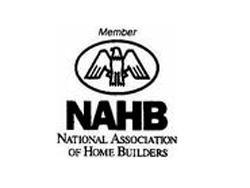Major Remodeling Activity Falls in Third Quarter
Washington, DC, Nov. 12, 2008--The residential remodeling market continued its slump during the third quarter, according to the National Association of Home Builders’ Remodeling Market Index.
The current market conditions indicator declined to 33.5, from 41.8 in the last quarter. Future expectations of remodeling work also slid to 27.7 (from 38.0 in the second quarter). Both these indices rest at historic lows since the start of the RMI in 2001.
The RMI measures remodeler perceptions of market demand for current and future residential remodeling projects. Any number over 50 indicates that the majority of remodelers view market conditions as improving. The RMI has been running below 50 since the final quarter of 2005, implying decreasing remodeling expenditures since that time.
“Remodelers reported another drop in major home improvements and expectations for future work have also declined,” said NAHB Remodelers Chairman Lonny Rutherford, a remodeler from Farmington, N.M.
“A slight increase in minor remodeling projects for owner-occupied home suggests customers are cutting back on home improvement spending.”
Nationally, current activity for major additions and alterations shrank to 29.38 (from 43.18 in the second quarter) during the third quarter, while minor additions and alterations slowed to 38.51 (from 42.89). Maintenance and repair dropped to 30.92 (from 39.06).
“The remodeling market declines follow the pattern of the home building slow down to a lesser degree,” said NAHB Chief Economist David Seiders.
The remodeling market is tightening due to more home builders taking on remodeling work, creating a more competitive marketplace and flattening out calls for bids and appointments for proposals.
Regionally, current market expectations fell in the third quarter, with the South dropping to 31.5 (from 40.1 in the second quarter), the Midwest to 36.2 (from 52.9), and the West to 36.1 (from 42.4). The Northeast increased slightly to 32.9 (from 32.8). The Midwest, however, increased to 52.9 (from 44.1). All measures for future expectation (calls for bids, amount of work committed for next three months, backlog of remodeling jobs, and appointments for proposals) declined.
